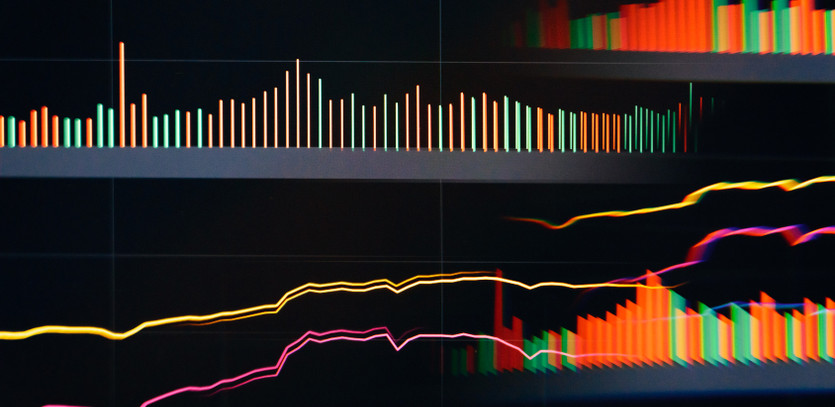The Forex Market – A Unique Landscape
The foreign exchange market, popularly known as Forex, provides a unique landscape within the vast world of trading. Unlike the stock market, Forex shows a stronger propensity for long-term trends. The stock market, a complex mosaic of individual stocks, is strongly influenced by company-specific microeconomic factors. Each stock dances to the tune of its own drum, swaying in rhythm with the respective company's profit and loss, economic forecasts, and market sentiment.
In stark contrast, the Forex market sings a different song. Its melody is orchestrated by larger macroeconomic trends that can take years to fully manifest. These trends are driven by the economic health and policies of entire nations, or rather, the comparative health and policies of pairs of nations. The implications of these macroeconomic trends can profoundly affect the global trading landscape.
The Core Dynamic of the Forex Market
A closer examination of the major pairs and commodity block currencies can offer a more nuanced understanding of these macroeconomic trends. This article will take a deep dive into the heart of these trends, exploring why they happen, how they originate, and where they have the most significant impact. Furthermore, we will explore the types of currency pairs that provide the best opportunities for range-bound trading.
- Key Insight 1: The forex market is significantly influenced by macro-level trends, shaping the market's landscape over extended periods, often spanning years.
- Key Insight 2: The major forex currency pairs, the cornerstones of global economic interaction, are EUR/USD, USD/JPY, GBP/USD, and USD/CHF.
- Key Insight 3: The most liquid financial instrument globally is the EUR/USD pair, testament to the economic prowess and interconnection of the European Union and the United States.
- Key Insight 4: USD/CAD, AUD/USD, and NZD/USD stand tall as the most liquid commodity currencies, representing some of the world's most potent and vibrant commodity-driven economies.
- Key Insight 5: For traders seeking the best range-bound trading opportunities, currency crosses emerge as the ideal candidates.
Dissecting the Major Currency Pairs
A Closer Look at the Major Players
In the bustling world of Forex, only four currency pairs enjoy the designation of 'major.' This provides an element of simplicity amidst the market's intricate dynamics. The major currency pairs are:
- EUR/USD - Euro / U.S. dollar: Representing two of the world's most powerful economies, this pair offers a fascinating insight into the Western world's economic dynamism.
- USD/JPY - U.S. dollar / Japanese yen: A testament to the East-West economic interaction, this pair reflects the intriguing interplay between the United States' and Japan's respective economic policies and market forces.
- GBP/USD - British pound / U.S. dollar: Embodying the historical ties and the modern economic interaction between the U.S. and the U.K., this pair has a rich historical backdrop.
- USD/CHF - U.S. dollar / Swiss franc: The USD/CHF pair showcases the relationship between a global economic superpower (the U.S.) and a nation renowned for its financial stability and banking prowess (Switzerland).
Given the economic might of the United States, the European Union, and Japan, it's unsurprising that these regions command the most active and liquid currencies. However, the inclusion of the United Kingdom, despite other nations with comparable or even superior GDP, requires further examination.
The Peculiar Case of the British Pound
As of 2020, India's GDP surpassed the United Kingdom's ($2.65 trillion vs. $2.63 trillion). Even Russia's GDP ($1.57 trillion) and Brazil's GDP ($2.05 trillion) rival the UK's economic output. So, why does the UK feature prominently as a major player in Forex?
The answer lies not in the present, but in the past. The United Kingdom has historically been a pioneer in developing sophisticated capital markets. There was a time when the British pound, not the U.S. dollar, served as the world's reserve currency. Thanks to this rich legacy and London's continued dominance as the epicenter of global forex trading, the pound remains firmly entrenched as a major world currency.
Understanding Commodity Block Currencies
The Backbone of Commodity-Driven Economies
The commodity block currencies represent another group of significant players in the Forex markets. This group includes:
- USD/CAD - Known as the "loonie": The Canadian dollar's value is often closely tied to commodity fluctuations, especially oil prices, as Canada is a significant oil exporter.
- AUD/USD - Referred to as the "Aussie": Australia's economy is closely intertwined with commodities like iron ore and gold, making its currency a commodity currency.
- NZD/USD - Known as the "kiwi": New Zealand's economy is strongly influenced by dairy exports, which can impact the NZD's value.
These nations are massive exporters of commodities, and the strength of their currencies often corresponds to the demand for their primary export commodities. In other words, commodity block currencies allow forex traders to indirectly speculate on commodity prices.
Embracing the Potential of Currency Crosses
Venturing Beyond the Majors and Commodity Block Currencies
Unlike the major pairs and commodity block currencies, which offer robust and long-lasting trending opportunities, currency crosses present the best range-bound trades. Currency crosses, as the name suggests, are currency pairs that do not include the USD. A classic example is the EUR/CHF, considered one of the best range-bound pairs to trade.
The Appeal of Currency Crosses
Currency crosses' appeal lies in the minimal difference in growth rates between the respective regions. For instance, Switzerland and the European Union both run current-account surpluses and adhere to fiscally conservative policies. This leads to relatively stable EUR/CHF exchange rates, ideal for range-bound trading strategies.
Interest Rates—The Final Key to the Puzzle
The Impact of Interest Rate Differentials
The interest rate differential between two countries directly impacts the trading range of their currency pairs. This key piece of information is crucial when considering range trading strategies. Traders must be acutely aware of these rate differentials and adjust their strategies to accommodate the associated volatility. Without considering interest rate differentials, what appear to be potentially profitable range-bound trading strategies can quickly turn into losing propositions.
Making the Most of Forex Trading
In conclusion, the Forex market is remarkably flexible, accommodating both trend and range traders. Success in Forex, as in any enterprise, hinges on having the right knowledge. Understanding the complex dynamics of Forex, specifically the interplay between major pairs, commodity currencies, and cross pairs, is integral to becoming a successful trader in this market.





